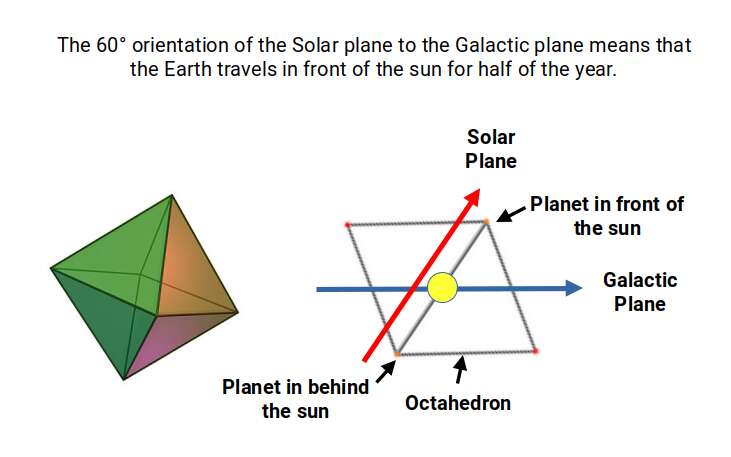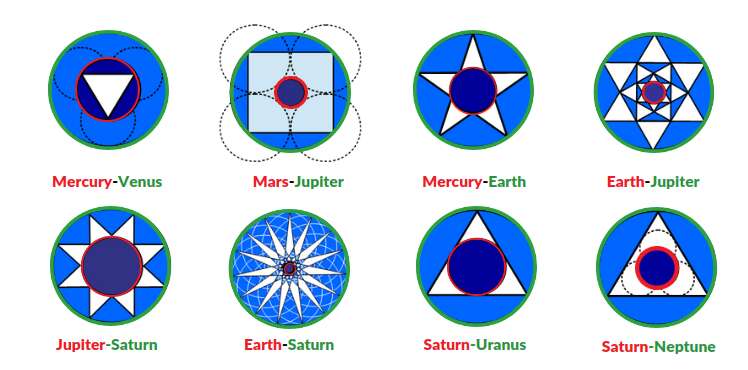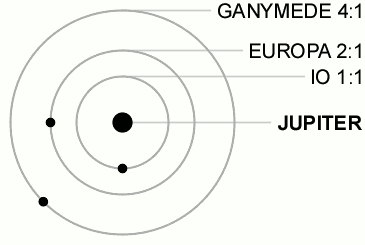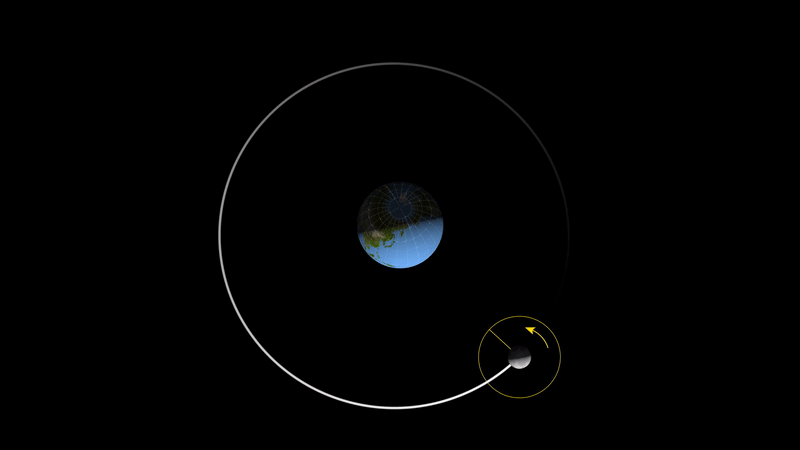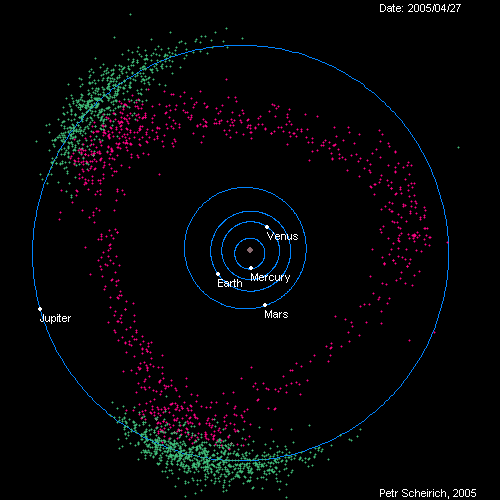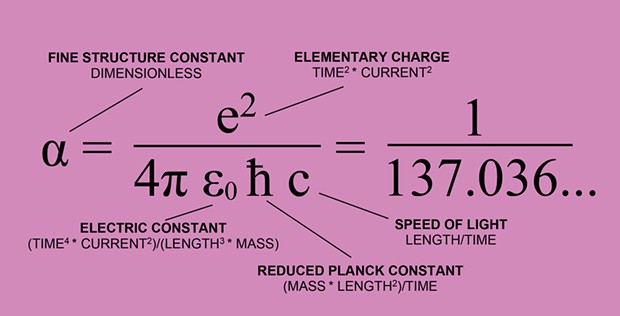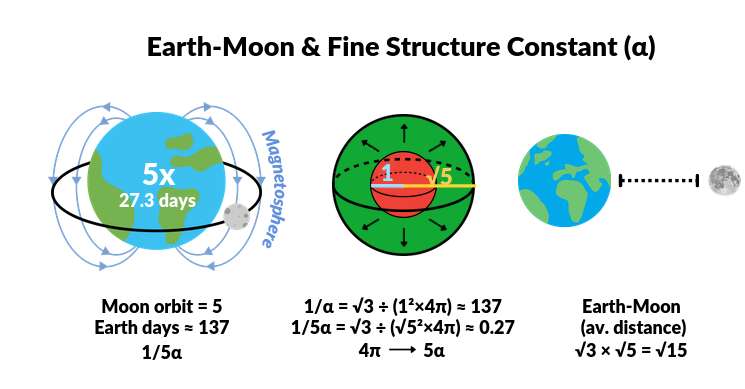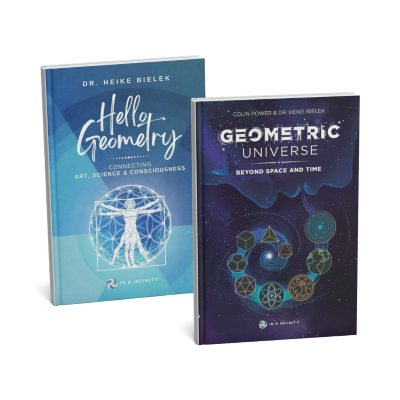Throughout history, the mysteries of our vast universe have unfolded one discovery at a time. In this article, we embark on a captivating journey to explore a remarkable aspect of our celestial neighbourhood – the intricate geometric patterns that shape our solar system. Beyond the familiar planets and their orbits, lies a hidden harmony governed by geometric ratios and shapes. By unravelling these fascinating connections, we unveil a new understanding of our cosmic home.
Overview
The solar system’s position in relation to the galactic plane reveals a helical spiral. The planets’ orbits align with the solar plane, forming geometric shapes that reflect the average distances between them. Orbital resonance between plants and their moons, and even the asteroid belt exhibit similar geometric ratios. The moon’s orbit correlates with the Fine Structure Constant, emphasising the interconnectedness of the universe.
Uncovering the Galactic Tapestry
Our solar system resides just North of the galactic plane, 25,000 light-years from the centre. As our solar system journeys across the galactic plane, the planets traverse their orbits, revealing a mesmerizing phenomenon – a helical spiral.
Our Solar System exhibits a distinctive solar plane, intersected by most planetary orbits. This plane, intriguingly aligned at a 60° angle to the galaxy. This means that offers clues to the celestial choreography that unfolds around us. Throughout their revolution, planets alternately take positions in front and behind the sun, creating an elegant dance over time. Remarkably, this celestial motion echoes the geometrical orientation of an Octahedron, with its square mid-plane inclined at 60° to the galactic centre.
This suggests that planets are not dragged along by the Sun. Instead, we should view the solar system contained within a torus field, with the sun at its centre.
Mapping Mean Orbital Distances
The fundamental shapes observed within our solar system correlate with the average distances between various planets. The triangle, for instance, illustrates the ratio of Mercury and Venus orbits. This is reflected in the relationship between the outer planets and Saturn.
The square shape harmonizes the orbits of Jupiter and Mars. Furthermore, three nested hexagons intricately describe the relationship between Jupiter and Earth. The 5-pointed star intrinsically manifests the Golden Ratio. It not only defines the mean orbits of Mercury and Earth, buy also their relative sizes to each other. The same can be said of the 15-pointed star that defines the mean orbit and size of Saturn and the Earth.
This revels a deep geometric interplay between planetary bodies in the solar system, which begin with the triangle, and evolves through the 5-pointed star up to Saturn after which the pattern reverts to a triangular formation. To complete the image, Venus performs a dance with the earth that traces out a 5-pointed star every 8 years. The numbers 5 and 8 are found in the Fibonacci series. Whereas 5 encodes the pentagon containing the Golden Ratio, the number 8 generate an octagon which produces the Silver Ratio.
These 2D forms can also be represented by 3D polyhedra, an idea first present by Johannes Kepler, who was the first to examine the nature of our solar system from the perspective of geometry. His geometric discoveries were discarded by conventional science, when inaccuracies in the model were found, due to the elliptic nature of the orbits of the planetary rotation around the sun. Yet, if we apply the mean orbital rotation, the geometric model clearly emerges.
The reason this fact has been discarded by science is that it does not comply with the current view of the gravitational theory. Solar Geometry reveal that the gravitational ‘force’ is in fact a geometric structure of space itself. Gravity maintains the equilibrium of this structure in accordance with the masses of various bodies. We suggest it is the 4D nature of the Sun, which generates the field which encompasses the entire Solar system, inside which the geometric structure of space is maintained.
Orbital resonance of planets and moons
The phenomenon known as Orbital Resonance generates an intricate interplay between celestial bodies within the solar system. While often overlooked in modern science due to slight deviations over time, this fascinating concept holds profound implications. In addition to the pentagonal dance between the Earth and Venus, similar geometric ratios are at play with other planetary pairs. Most striking is the 2:3 ratio between the orbit of Saturn and Jupiter.
Within our solar system, resonant frequencies abound are found between the moons of various planets. By designating the orbital period of Jupiter as 1 unit, a remarkable harmony emerges. Its 3 moons, Io, Europa, and Ganymede follow a simple expansion through a doubling ratio, from 1 to 4.
Similarly, the Earth-Moon system is also locked in a 1:1 ratio. The Moon faithfully revolves around the Earth, completing a single orbit for every rotation of our planet. For this reason, we never see the dark side of the moon. It is quite amazing to think that the Sun is 400 times larger than the moon, but is also 400 times further away. This intricate relationship is the reason why we can experience a total eclipse of the sun, which processes through the Saros Cycle, every 18 years.
Although some scientists tend to overlook the significance of Orbital Resonance due to minute discrepancies over time, it is crucial to recognise the profound impact it has on the formation and sustenance of life. The moon is responsible for the changing of the tides on earth, without which life in the sea would probably never evolve.
While perfect resonance may elude us, the dynamic and evolving nature of these resonant phenomena should not be dismissed. The delicate balance of fractions of a percent serves as a catalyst for the intricate dance of celestial bodies, paving the way for the potential emergence of life as we know it.
Kirkwood gaps and the Asteroid belt
The nature of geometric ratio is not confined to planets and moons. The Asteroid belt also exhibits spaces at specific ratios. The distance from the Earth to the Sun equates to 1 astronomical unit (AU). Starting from the orbital of Jupiter, resonant frequencies are found within the asteroid belt, known as Kirkwood gaps. These are attributed to the gravitational filed of Jupiter, which is suggestive of the geometric nature of gravity. Notably, the rings of Saturn also exhibit a similar phenomenon.
Most depictions of the asteroid belt show it as a circular ring dividing the space between Jupiter and Mars. However, in truth, is forms a triangular formation. Jupiter itself resides between 2 large groups of asteroids, sometimes referred to as the Greeks and the Trojans. These both reside on the corners of the triangular asteroid belt. Previously, we saw how a nested set of hexagon defines the mean orbits of Jupiter and the Earth. The same geometric blueprint is apparent in the formation of the asteroid belt itself.
The Moon and the Fine structure constant
The moon revolves around the earth approximately every 27 days. We have calculated that at the heart of this cosmic symphony lies the Fine Structure Constant, an essential scientific constant that determines the strength of electromagnetic forces. It combines all the major scientific constants, yet the reason for its exact value is presently unknown. Represented by the Greek letter α, its approximate value of 1/137.
It reveals a fascinating correlation with the Moon’s orbits. The Moon completes a full revolution around the Earth in approximately 27.3 days, which, intriguingly, can be expressed as 1/5α. Delving further, we discover that the Fine Structure Constant’s definition involves the ratio √3÷(1²×4π), a value determined by our system of Dimensionless Science. Here, 4π symbolises the surface area of a sphere with a radius of 1, formed by the magnetic permeability μ0.
By expanding the radius of the aforementioned sphere to √5, we generate a larger surface area of 5α. This closely approximates the ratio between the Earth and Moon’s rotations, with a value of 0.02740, whereas the moon rotates around the Earth every 27.32 days. Therefore, every 137 days that pass on Earth, the moon will revolve 5 times, echoing the pentagonal dance of Venus.
The average distance between the Earth and Moon, approximately 387,900 km, can be closely approximated as √15×10⁶, which is brought about by the multiplication of √3 and √5.
The fine structure constant is usually reserved for scales of the atom, therefore its appearance within the structure of the Earth Moon relationship is nothing short of a scientific revolution. It suggests that the earth and moon act similarly to the coupling of fundamental particles.
In the mélange of cosmic wonders, the relationship between the Moon, Earth, and the Fine Structure Constant emerges as a testament to the exquisite interconnectedness of the universe. This interplay demonstrates how electromagnetic forces, embodied by the Fine Structure Constant, manifest in the celestial realm.
THE
Conclusion
Beyond the realm of scientific explanation lies the metaphysical insight that Orbital Resonance acts as a prerequisite for the manifestation of life. It suggests a cosmic symphony orchestrated with delicate precision, allowing the birth and evolution of living organisms. While modern science often focuses on measurable absolutes, embracing the metaphysical viewpoint broadens our understanding of our place in the cosmic tapestry.
Orbital Resonance is a captivating phenomenon connecting all celestial bodies in our solar system. From the locked rhythm of our Earth-Moon system to the harmonious symphony echoing throughout the planets and moons, this intricate dance hints at a larger order of creation. While scientific scrutiny may sometimes downplay the significance of these resonant phenomena, their existence and influence remain undeniable. Exploring the metaphysical implications, Orbital Resonance unveils a deeper connection between the cosmic dance and the wondrous emergence of life itself.
Carry on Learning
Discover more about the GEOMETRIC UNIVERSE by reading these key posts

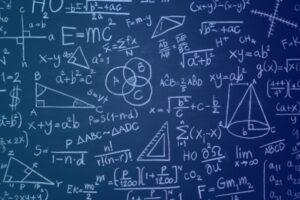
4D Maths
4D Maths is a fundamental step into a new dimension of mathematics. Founded upon the idea of space, time and dimension, and the infinity equation, 0 ±1= ±∞, the 4D calculator generates new insight into the infinite nature of numbers, and introduces the ‘Theory of Effort’. Overview How numbers are
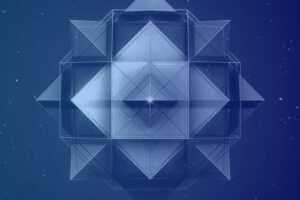
Geo-Optics
The electromagnetic (EM) spectrum, with its vast collection of frequencies ranging from ultra low radio waves to high intensity gamma radiation, holds within it a spectrum of Visible Light (VS). Presenting itself in a distinctive range of colours, this mesmerizing portion of the spectrum can be perceived by our eyes,

Geo-Quantum Mechanics
Geo-Quantum Mechanics (GQM) is an extension to the field of Atomic Geometry. Whilst Atomic Geometry focuses on the S, P, D, and F orbitals, produced from the Hydrogen atom, GQM examines the nature of the electron cloud for the entire periodic table. It presents a more advanced geometric model of

